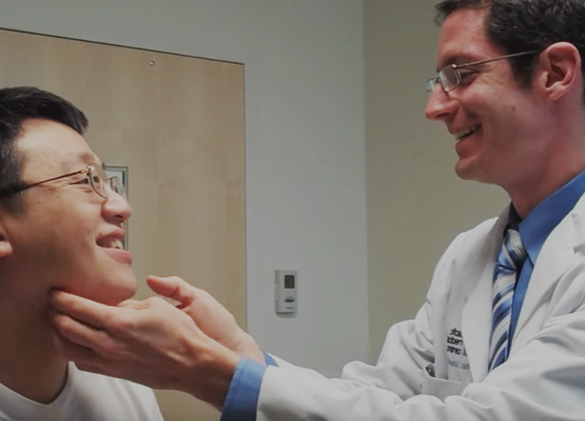What can be done to treat an upturned, over-shortened nose with a pollybeak deformity that resulted from a prior Rhinoplasty?
I have written about the upturned or over-rotated nose a few times in the past. It's one of the more complex problems we encounter in rhinoplasty surgery. I discussed fixing a congenitally short, upturned nose here and a post-rhinoplasty over-rotated nose with pollybeak deformity here. Today I'd like to talk about another patient who came to me with an iatrogenic (caused by prior surgery) upturned, foreshortened nose.
Over-Rotated Nose Case Study
This gentleman had a rhinoplasty with a different surgeon to remove a dorsal hump about 6 months before coming in to see me. He was unhappy with how upturned his nose had become since having surgery. Additionally, his bridge appears over-resected, especially at his radix (the upper portion of his bridge between his eyes). This results in a pollybeak appearance with a persistently full supratip.

Pig Snout Effect
Not only does his nose look less masculine as a result but it leads to what some call a pig snout effect due to the fact everyone is looking up into his nostrils on frontal view

Another thing you may notice on this patient's frontal view is that his nasal bones were incompletely narrowed. What had happened is that the prior surgeon had placed the lateral osteotomies too high. As a result the bone below the fracture line on the nasal sidewall remains too wide.
Derotating and lenghtening the nose
Using an open revision rhinoplasty approach I was able to address all of these issues. Cartilage grafts were taken from the patient's septum and ear to allow me to create a strong, stable nasal framework. A caudal septal extension graft was placed to help lengthen the nose and counter-rotate the tip. The after profile photo below shows how I was able to create a more masculine, natural appearance by bring the nasal tip down to a less rotated position. I placed a cartilage radix graft to build up the nasal bridge height where it was over-resected.

See less nostrils
On frontal view you can see how much more natural the tip appears now that we aren't looking so directly up the patient's nostrils. He also has a much better nasal sidewall appearance now that I was able to fully narrow his nasal bones with revision osteotomies.
This case is a great example of the power of the structure based approach to rhinoplasty surgery. By focusing on building a strong, correctly positioned underlying nasal framework significant changes are able to be made to the nose.
Want to learn more about revision rhinoplasty? Contact us here if you'd like to find out if you're a candidate for revision rhinoplasty.


